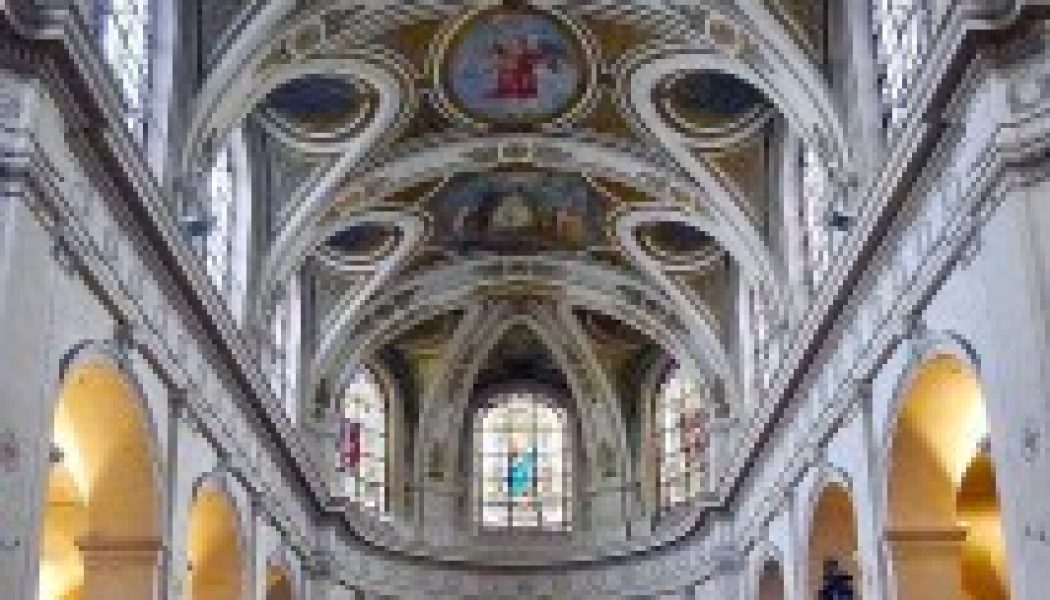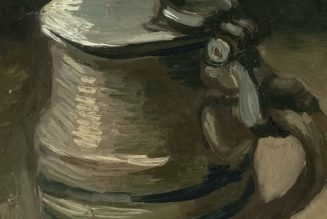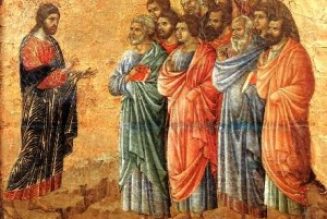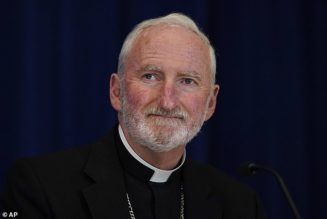“By God, you will be no doctor or apothecary, but a great composer.”
—Jean-François Le Sueur, to Hector Berlioz, upon hearing the premier of the Messe Solennelle
Its premier in 1825 marked one of the most remarkable musical debuts ever by a composer, and the score’s rediscovery 167 years later in a church attic is one of the most astounding events in musicological history. For the composer of this work eventually destroyed all but one of the surviving copies of the score.
This is the Messe solennelle of the young Hector Berlioz (1803-1869), who had defied his parents’ wishes for him to be a doctor—earning him the curse of his mother that would haunt him for the rest of his life—fleeing his home to study with the composer Jean-François Le Sueur. Berlioz had little musical knowledge when he met Le Sueur; his parents had introduced him only to a few musical instruments, the flute, the flageolet, and guitar, and in only the most rudimentary way. He never learned how to play the piano, a fact that made him stand out among his musical contemporaries and indeed among most composers in history, and also surely led to the creation of the unique sound-world of his compositions, one that made him sound so radically out of his own time that it alienated many of his contemporaries, and indeed sullied his reputation for posterity.
“It’s amazing that such a provincial background managed to produce this great genius,” Berlioz scholar Michel Austin says. “In the Bach family there was a context for Johann Sebastian, he was a natural growth from that, still with the exception that he was a genius. But in the case of Berlioz it comes out of nowhere.”[1] Berlioz learned to compose by studying the scores of other composers. He did not hear these works actually performed, mind you; indeed, when he would finally hear large-scale musical performances at the Paris Opera, he would be so ravished by the sounds that, as he said, he almost exploded. So, when he came to Le Sueur to study, the untutored medical-school dropout already had apprehended how to construct a large-scale work for voices and orchestra.
In 1824, after only a year of musical study with Le Sueur, the 20-year-old Berlioz was commissioned by the authorities of his parish church of Saint-Roch, Paris, to write a Mass for the Feast of the Holy Innocents. He had already composed four significant works—an opera, an oratorio, a cantata, and a dramatic scene—all of which he destroyed out of dissatisfaction with them. The result of the commission from Saint-Roch was an hour-long “Solemn Mass” for full orchestra, soloists, and choir. Berlioz, through the help of a friend, was able to enlist the Paris Orchestra Opera to perform the work. For funding to pay the musicians, he first turned to the renowned philosopher, statesman, and aristocrat, François-René de Chateaubriand, who turned him down, before securing the money from another supporter. Due to mistakes in copies of the scores, and to the difficulty the musicians had learning the radical piece, the first performance of the Mass, set for the Feast of the Holy Innocents on December 28, was postponed. The following year, on July 10, 1825, the Feast of the Sacred Heart, the Messse solennelle was at last premiered in the church, with the conductor of the Paris Opera, Henri Valentino, conducting, and Berlioz playing the drums.
The work was enthusiastically received by those in attendance. “I think my mass made an infernal impression,” Berlioz recalled, “especially the powerful sections.” During the Resurrexit, Berlioz, mallet in hand, was eager to instill the most dramatic effect possible on his listeners:
After announcing, with all the trumpets and trombones in the world, the arrival of the final judgment, the human choir dried up with fear was deployed. O God! I swam on this tempestuous sea, breathing in this flood of sinister vibrations. I was willing to entrust no-one else with the attack on my audience, and after having announced to the sinners, with a first broadside from the brass, that the moment of tears and gnashing of teeth had come, I hit the tom-tom so hard that the entire church trembled. If the ladies especially didn’t believe that the end of the world was at hand, I can’t be blamed.
Berlioz’s early desire for his music to stir the deepest emotions through the use of most dramatic musical effects was a trait that would characterize his music for the next four decades. As scholar Martine Kauffman explains:
Endless readings at the Côte-Saint-André of Châteaubriand’s “Génie du christianisme“ had already imbued Berlioz with the foundations of an aesthetic’s a religious and dramatic music based on Christianity wedded to the expression of human passion. To this influence can be added a personal poetics of space fed by childhood memories of parochial religious ceremonies, of the Gregorian chants which instilled profound taste for modality, and of the popular Dauphiné melodies that are doubtless the inspiration for certain melodic forms in the Messe.[2]
After the performance, well-wishers rushed Berlioz to praise him. “Within two minutes,” the composer reported, “I was surrounded, swamped, overwhelmed by the artists, performers and audience members who filled the church…. I seem to have floored them.” “Come let me embrace you,” his teacher Le Sueur effused. “By God, you will be no doctor or apothecary, but a great composer; you have genius—I tell you because it’s true.”
After a second performance of the Mass in 1827, conducted by Berlioz himself, the composer would never have the work performed again in his lifetime. He burned all the part copies he could find, saving only the Resurrexit movement, and altering it slightly—substituting for example, a male choir for the solo bass, doubling the number of trumpets and timpani, and adding two verses to the text. But this movement would be performed as a self-standing piece by Berlioz only two times, the second occasion with the title, Le jugement dernier (The Last Judgment). Berlioz, however, would re-use the music of this movement in three later works: the Requiem, the Te Deum, and the opera Benvenuto Cellini. And though he burnt the rest of the Mass, he also saved music from other sections for later use: some of the music in the Gloria would also be used Benvenuto Cellini, as well as in the Roman Carnival overture; the opening of the Gratias would reappear in the slow movement of the Symphonie fantastique; and the music of the Agnus Dei would reappear in an expanded form in the “Te Ergo Quaesumus” of the Te Deum.
The Messe solennelle was preserved in toto, as it turns out, only because Berlioz presented the original, full score, a decade after the initial performance, to his friend from the Paris Conservatory, the violinist Antoine Bessems. The composer had quietly preserved this as the only copy of the work. “This Mass, entirely in the hand of Berlioz,” Bessems wrote on the title page, “was given to me as a souvenir of the long friendship which binds me to him.” After Beseems’ death, the score was passed along to his brother, Joseph, choirmaster of the church of Saint Charles Borroomeus in Antwerp, Belgium. In 1991, a teacher named Frans Moors, who was looking for a copy of Mozart’s Coronation Mass, found the score of the Messse solennelle in an old trunk in the attic of the church, where it has been forgotten for more than a century-and-a-half.
The Messse solennelle, unlike many heralded musicological “discoveries” is not a “recreation” by modern-day musicologists from scattered orchestral parts and first drafts, neither is it a “study” work, a mediocre piece of juvenilia by an immature composer who has much to learn about his craft it is. Rather, it is the astounding, mature-sounding creation of a twenty-year-old, informally- and barely-trained composer, who “hadn’t taken a single class in composition” when he wrote it, as conductor Herve Niquet points out: “Which means that this guy is a genius in spontaneous creation.”[3] The Messse solennelle we have today thanks to Berlioz, Antoine Bessems, and Frans Moors, is the composer’s fully-imagined and fully-realized final draft—the first large-scale work by Berlioz that we possess—and an undeniably great work on par with the mature Berlioz’s two other liturgical works, the Te Deum and the Requiem. Listen, for example, to the sheer melodic beauty of the “Gratias” and “Incarnatus”; to the mystery and horror of the “Crucifixus”; to the overwhelming power of the “Resurrexit,” surely the most stirring realization of Jesus’ resurrection in all of music; and to the intoxicating, rousing call for God to save the king in the closing “Domine Salvum.”
The fact that we have the joy of listening to the Messe Solennelle today is indeed little short of a miracle, and we can only give thanks to God for His role in preserving this work that so worthily praises Him.
Movements:
- Introduction
- Kyrie
- Gloria
- Gratias
- Quoniam
- Credo
- Incarnatus
- Crucifixus
- Resurrexit
- Motet pour l’Offertoire
- Sanctus
- O Salutaris
- Agnus Dei
- Domine salvum
Notes:
[1] Michel Austin quoted in “The Berliozians,” Van Magazine.
[2] Martine Kauffman, booklet notes for the Accord recording of Hector Berlioz, Messe Solennelle, conducted by Jean-Paul Penin.
[3] Herve Niquet quoted here.
This is part of a series of essays commemorating the 150th anniversary of the death of Hector Berlioz.
The Imaginative Conservative applies the principle of appreciation to the discussion of culture and politics—we approach dialogue with magnanimity rather than with mere civility. Will you help us remain a refreshing oasis in the increasingly contentious arena of modern discourse? Please consider donating now.
The featured image is Saint-Roch Church, Paris, courtesy of Wikimedia Commons. This file is licensed under the Creative Commons Attribution-Share Alike 3.0 Unported, 2.5 Generic, 2.0 Generic and 1.0 Generic license. The image of the portrait of Hector Berlioz (1832) by Émile Signol is in the public domain and appears here courtesy of Wikipedia. The title page of the Messe Solennelle is in the public domain and appears here courtesy of Wikipedia.









![[Must-Read] If there is anything I learned during my time as an interrogator at Guantanamo Bay, it is the importance of a well-formed conscience…](https://salvationprosperity.net/wp-content/uploads/2022/06/must-read-if-there-is-anything-i-learned-during-my-time-as-an-interrogator-at-guantanamo-bay-it-is-the-importance-of-a-well-formed-conscience-327x219.jpg)



